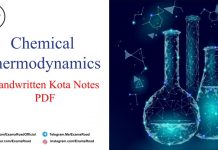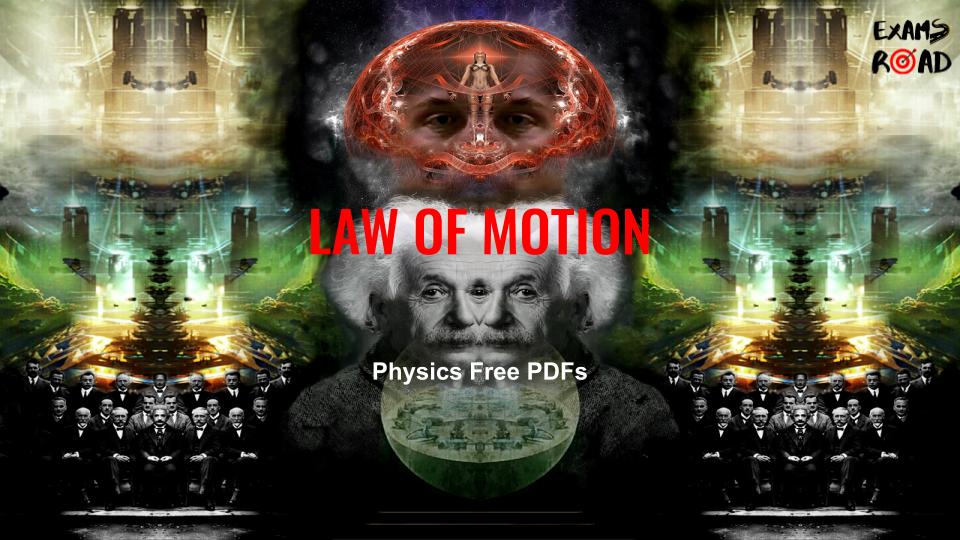Complete Biology Syllabus for NEET AIIMS (Topicwise) 2024
The National Eligibility cum Entrance Test (NEET) is a highly competitive examination in India for students aspiring to pursue undergraduate medical and dental courses. Biology plays a pivotal role within the NEET syllabus, encompassing a vast range of topics.
In this article, we present a comprehensive guide to the biology syllabus for the NEET exam, highlighting key topics in each category and providing effective preparation strategies to help you excel in the exam.
-
Diversity in Living World: This section focuses on the classification and diversity of living organisms. The key topics within this domain include:
a. Taxonomy and Systematics: Learn the principles of classification, the hierarchy of classification, and the binomial nomenclature.
b. Five Kingdom Classification: Familiarize yourself with the classification of organisms into Monera, Protista, Fungi, Plantae, and Animalia.
c. Biological Classification: Understand the classification based on the plant and animal kingdom, their characteristic features, and examples.
-
Structural Organization in Plants and Animals: This section deals with the study of the structural organization of plants and animals at various levels. The key topics include:
a. Morphology of Plants: Study the different parts of plants, their functions, and modifications.
b. Anatomy of Plants: Gain knowledge about the internal structure of plants, tissues, and their functions.
c. Structural Organization in Animals: Understand the different organ systems in animals and their functions.
-
Cell Structure and Function: This section focuses on the study of cells, their structure, and their various functions. The key topics include:
a. Cell Theory: Grasp the basic principles of the cell theory and its historical significance.
b. Cell Structure: Learn in detail about the structure and functions of cell organelles.
c. Cell Division: Understand the processes of mitosis and meiosis, their stages, and significance.
d. Biomolecules: Familiarize yourself with the structure and functions of carbohydrates, proteins, lipids, and nucleic acids.
e. Enzymes: Gain knowledge about the structure, types, and the role of enzymes in metabolic processes.
-
Plant Physiology: Plant Physiology deals with the functioning and processes within plants. The key topics include:
a. Photosynthesis: Learn about the light and dark reactions, the Calvin cycle, and the factors affecting photosynthesis.
b. Respiration: Understand aerobic and anaerobic respiration, glycolysis, the Krebs cycle, and the electron transport chain.
c. Plant Growth and Development: Gain knowledge about plant hormones, photoperiodism, vernalization, and seed germination.
d. Transport in Plants: Study the transport of water, minerals, and organic solutes in plants.
-
Human Physiology: Human Physiology focuses on the functioning of the human body. The key topics include:
a. Digestion and Absorption: Learn about the structure and function of the digestive system, enzymes involved, and nutrient absorption.
b. Breathing and Exchange of Gases: Understand the respiratory system, the mechanism of breathing, gas exchange, and transport.
c. Body Fluids and Circulation: Gain knowledge about blood, the lymphatic system, and the cardiovascular system.
d. Excretory Products and Elimination: Study the structure and function of the urinary system, urine formation, and excretory processes.
e. Neural Control and Coordination: Understand the nervous system, the structure and functions of neurons, and reflex actions.
f. Endocrine System: Learn about the major endocrine glands, hormones, and their functions.
-
Genetics and Evolution: This section deals with the principles of inheritance and evolutionary processes. The key topics include:
a. Principles of Inheritance and Variation: Understand Mendelian genetics, the laws of inheritance, and genetic disorders.
b. Molecular Basis of Inheritance: Gain knowledge about the structure and replication of DNA, transcription, translation, and the genetic code.
c. Evolution: Study the origin of life, theories of evolution, and evidence of evolution.
-
Biotechnology and its Applications: This section focuses on the applications of biotechnology in various fields. The key topics include:
a. Principles and Process of Biotechnology: Understand genetic engineering, recombinant DNA technology, and cloning.
b. Applications of Biotechnology: Learn about the applications of biotechnology in agriculture, medicine, and the environment.
-
Ecology and Environment: Ecology and Environment deal with the study of interactions between organisms and their environment. The key topics include:
a. Ecosystem: Study the structure and functions of ecosystems, energy flow, and nutrient cycling.
b. Biodiversity and Conservation: Understand the types of biodiversity, threats to biodiversity, and conservation measures.
c. Environmental Issues: Gain knowledge about pollution, global warming, ozone depletion, and sustainable development.
What is the Topic-wise Syllabus for NEET Biology Exam 2024 ?
This question must be coming in the mind of NEET Exam aspirants. So here we have shortlisted the detailed topicwise syllabus for NEET exam Biology section. In this article we have provided the topic wise weightage of marks so that student can get the exact idea that which topic is more important in exam.
Student can also download the Biology section syllabus PDF for NEET exam from below link that is provided at the end of article.
| BIOLOGY TOPICS COVERED IN CLASS XI | ||
| Class XI | Weightage* | Details |
| Diversity in Living World |
14%
|
What is living? ; Biodiversity; Need for classification; Three domains of life;
Taxonomy & Systematics; Concept of species and taxonomical hierarchy; Binomial nomenclature; Tools for study of Taxonomy – Museums, Zoos, Herbaria, Botanical gardens. Five kingdom classification; salient features and classification of Monera; Protista and Fungi into major groups; Lichens; Viruses and Viroids. Salient features and classification of plants into major groups-Algae, Bryophytes, Pteridophytes, Gymnosperms and Angiosperms (three to five salient and distinguishing features and at least two examples of each category); Angiospermsclassification up to class, characteristic features and examples). Salient features and classification of animals-nonchordate up to phyla level and chordate up to classes level (three to five salient features and at least two examples). |
| Chapter-1: The Living World | ||
| Chapter-2: Biological Classification | ||
| Chapter-3: Plant Kingdom | ||
| Chapter-4: Animal Kingdom | ||
| Structural Organisation in Animals and Plants |
5
|
Morphology and modifications; Tissues; Anatomy and functions of different parts
of flowering plants: Root, stem, leaf, inflorescence- cymose and recemose, flower, fruit and seed (To be dealt along with the relevant practical of the Practical Syllabus). Animal tissues; Morphology, anatomy and functions of different systems (digestive, circulatory, respiratory, nervous and reproductive) of an insect (cockroach). (Brief account only) |
| Chapter-5: Morphology of Flowering Plants | ||
| Chapter-6: Anatomy of Flowering Plants | ||
| Chapter-7: Structural Organisation in Animals | ||
| Cell Structure and Function |
9
|
Cell theory and cell as the basic unit of life; Structure of prokaryotic and
eukaryotic cell; Plant cell and animal cell; Cell envelope, cell membrane, cell wall; Cell organelles-structure and function; Endomembrane system-endoplasmic reticulum, Golgi bodies, lysosomes, vacuoles; mitochondria, ribosomes, plastids, micro bodies; Cytoskeleton, cilia, flagella, centrioles (ultra structure and function); Nucleus-nuclear membrane, chromatin, nucleolus. Chemical constituents of living cells: Biomolecules-structure and function of proteins, carbodydrates, lipids, nucleic acids; Enzymes-types, properties, enzyme action. B Cell division: Cell cycle, mitosis, meiosis and their significance. |
| Chapter-8: Cell-The Unit of Life | ||
| Chapter-9: Biomolecules | ||
| Chapter-10: Cell Cycle and Cell Division | ||
| Plant Physiology |
6
|
Transport in plants: Movement of water, gases and nutrients; Cell to cell
transport-Diffusion, facilitated diffusion, active transport; Plant – water relations – Imbibition, water potential, osmosis, plasmolysis; Long distance transport of water – Absorption, apoplast, symplast, transpiration pull, root pressure and guttation; Transpiration-Opening and closing of stomata; Uptake and translocation of mineral nutrients-Transport of food, phloem transport, Mass flow hypothesis; Diffusion of gases (brief mention). Mineral nutrition: Essential minerals, macro and micronutrients and their role; Deficiency symptoms; Mineral toxicity; Elementary idea of Hydroponics as a method to study mineral nutrition; Nitrogen metabolism-Nitrogen cycle, biological nitrogen fixation. Photosynthesis: Photosynthesis as a means of Autotrophic nutrition; Site of photosynthesis take place; pigments involved in Photosynthesis (Elementary idea); Photochemical and biosynthetic phases of photosynthesis; Cyclic and non cyclic and photophosphorylation; Chemiosmotic hypothesis; Photorespiration C3 and C4 pathways; Factors affecting photosynthesis. Respiration: Exchange gases; Cellular respiration-glycolysis, fermentation (anaerobic), TCA cycle and electron transport system (aerobic); Energy relations- Number of ATP molecules generated; Amphibolic pathways; Respiratory quotient. Plant growth and development: Seed germination; Phases of Plant growth and plant growth rate; Conditions of growth; Differentiation, dedifferentiation and redifferentiation; Sequence of developmental process in a plant cell; Growth regulators-auxin,gibberellin, cytokinin, ethylene, ABA; Seed dormancy; Vernalisation; Photoperiodism. |
| Chapter-11: Transport in Plants | ||
| Chapter-12: Mineral Nutrition | ||
| Chapter-13: Photosynthesis in Higher Plants | ||
| Chapter-14: Respiration in Plants | ||
| Chapter-15: Plant – Growth and Development | ||
| Human physiology |
20
|
Digestion and absorption; Alimentary canal and digestive glands; Role of digestive
enzymes and gastrointestinal hormones; Peristalsis, digestion, absorption and assimilation of proteins, carbohydrates and fats; Caloric value of proteins, carbohydrates and fats; Egestion; Nutritional and digestive disorders – PEM, indigestion, constipation, vomiting, jaundice, diarrhea. Breathing and Respiration: Respiratory organs in animals (recall only); Respiratory system in humans; Mechanism of breathing and its regulation in humans-Exchange of gases, transport of gases and regulation of respiration Respiratory volumes; Disorders related to respiration-Asthma, Emphysema, Occupational respiratory disorders. Body fluids and circulation: Composition of blood, blood groups, coagulation of blood; Composition of lymph and its function; Human circulatory system-Structure of human heart and blood vessels; Cardiac cycle, cardiac output, ECG, Double circulation; Regulation of cardiac activity; Disorders of circulatory system- Hypertension, Coronary artery disease, Angina pectoris, Heart failure. Excretory products and their elimination: Modes of excretion- Ammonotelism, ureotelism, uricotelism; Human excretory system-structure and fuction; Urine formation, Osmoregulation; Regulation of kidney function-Renin-angiotensin, Atrial Natriuretic Factor, ADH and Diabetes insipidus; Role of other organs in excretion; Disorders; Uraemia, Renal failure, Renal calculi, Nephritis; Dialysis and artificial kidney. Locomotion and Movement: Types of movement- ciliary, fiagellar, muscular; Skeletal muscle- contractile proteins and muscle contraction; Skeletal system and its functions (To be dealt with the relevant practical of Practical syllabus); Joints; Disorders of muscular and skeletal system-Myasthenia gravis, Tetany, Muscular dystrophy, Arthritis, Osteoporosis, Gout. Neural control and coordination: Neuron and nerves; Nervous system in humanscentral nervous system, peripheral nervous system and visceral nervous system; Generation and conduction of nerve impulse; Reflex action; Sense organs; Elementary structure and function of eye and ear. Chemical coordination and regulation: Endocrine glands and hormones; Human endocrine system-Hypothalamus, Pituitary, Pineal, Thyroid, Parathyroid, Adrenal, Pancreas, Gonads; Mechanism of hormone action (Elementary Idea); Role of hormones as messengers and regulators, Hypo-and hyperactivity and related disorders (Common disorders e.g. Dwarfism, Acromegaly, Cretinism, goiter, exopthalmic goiter, diabetes, Addison’s disease). |
| Chapter-16: Digestion and Absorption | ||
| Chapter-17: Breating and Exchange of Gases | ||
| Chapter-18: Body Fluids and Circulation | ||
| Chapter-19: Excretory Products and Their Elimination | ||
| Chapter-20: Locomotion and Movement | ||
| Chapter-21: Neural Control and Coordination | ||
| Chapter-22: Chemical Coordination and Integration | ||
| BIOLOGY TOPICS COVERED IN CLASS XII | ||
| Class XII | Weightage* | Details |
| Reproduction |
9%
|
Reproduction in organisms: Reproduction, a characteristic feature of all
organisms for continuation of species; Modes of reproduction – Asexual and sexual; Asexual reproduction; Modes-Binary fission, sporulation, budding, gemmule, fragmentation; vegetative propagation in plants. Sexual reproduction in flowering plants: Flower structure; Development of male and female gametophytes; Pollination-types, agencies and examples; Outbreeding devices; Pollen-Pistil interaction; Double fertilization; Post fertilization events- Development of endosperm and embryo, Development of seed and formation of fruit; Special modes-apomixis, parthenocarpy, polyembryony; Significance of seed and fruit formation. Human Reproduction: Male and female reproductive systems; Microscopic anatomy of testis and ovary; Gametogenesis-spermatogenesis & oogenesis; Menstrual cycle; Fertilisation, embryo development upto blastocyst formation, implantation; Pregnancy and placenta formation (Elementary idea); Parturition (Elementary idea); Lactation (Elementary idea). Reproductive health: Need for reproductive health and prevention of sexually transmitted diseases (STD); Birth control-Need and Methods, Contraception and Medical Termination of Pregnancy (MTP); Amniocentesis; Infertility and assisted reproductive technologies – IVF, ZIFT, GIFT (Elementary idea for general awareness). |
| Chapter-1: Reproduction in Organisms | ||
| Chapter-2: Sexual Reproduction in Flowering Plants | ||
| Chapter-3: Human Reproduction | ||
| Chapter-4: Reproductive Health | ||
| Genetics and Evolution |
18%
|
Heredity and variation: Mendelian Inheritance; Deviations from Mendelism-
Incomplete dominance, Co-dominance, Multiple alleles and Inheritance of blood groups, Pleiotropy; Elementary idea of polygenic inheritance; Chromosome theory of inheritance; Chromosomes and genes; Sex determination-In humans, birds, honey bee; Linkage and crossing over; Sex linked inheritance-Haemophilia, Colour blindness; Mendelian disorders in humans-Thalassemia; Chromosomal disorders in humans; Down’s syndrome, Turner’s and Klinefelter’s syndromes. Molecular basis of Inheritance: Search for genetic material and DNA as genetic material; Structure of DNA and RNA; DNA packaging; DNA replication; Central dogma; Transcription, genetic code, translation; Gene expression and regulation- Lac Operon; Genome and human genome project; DNA finger printing. Evolution: Origin of life; Biological evolution and evidences for biological evolution from Paleontology, comparative anatomy, embryology and molecular evidence); Darwin’s contribution, Modern Synthetic theory of Evolution; Mechanism of evolution-Variation (Mutation and Recombination) and Natural Selection with examples, types of natural selection; Gene flow and genetic drift; Hardy-Weinberg’s principle; Adaptive Radiation; Human evolution. |
| Chapter-5: Principles of Inheritance and Variation | ||
| Chapter-6: Molecular Basis of Inheritance | ||
| Chapter-7: Evolution | ||
| Biology and Human Welfare |
9%
|
Health and Disease; Pathogens; parasites causing human diseases (Malaria,
Filariasis, Ascariasis. Typhoid, Pneumonia, common cold, amoebiasis, ring worm); Basic concepts of immunology-vaccines; Cancer, HIV and AIDS; Adolescence, drug and alcohol abuse. Improvement in food production; Plant breeding, tissue culture, single cell protein, Biofortification; Apiculture and Animal husbandry. Microbes in human welfare: In household food processing, industrial production, sewage treatment, energy generation and as biocontrol agents and biofertilizers. |
| Chapter-8: Human Health and Diseases | ||
| Chapter-9: Strategies for Enhancement in Food Production | ||
| Chapter-10: Microbes in Human Welfare | ||
| Biotechnology and Its Applications |
4%
|
Principles and process of Biotechnology: Genetic engineering (Recombinant
DNA technology). Application of Biotechnology in health and agriculture: Human insulin and vaccine production, gene therapy; Genetically modified organisms-Bt crops; Transgenic Animals; Biosafety issues-Biopiracy and patents. |
| Chapter-11: Biotechnology – Principles and Processes | ||
| Chapter-12: Biotechnology and its Application | ||
| Ecology and environment |
6%
|
Organisms and environment: Habitat and niche; Population and ecological
adaptations; Population interactions-mutualism, competition, predation, parasitism; Population attributes-growth, birth rate and death rate, age distribution. Ecosystem: Patterns, components; productivity and decomposition; Energy flow; Pyramids of number, biomass, energy; Nutrient cycling (carbon and phosphorous); Ecological succession; Ecological Services-Carbon fixation, pollination, oxygen release. Biodiversity and its conservation: Concept of Biodiversity; Patterns of Biodiversity; Importance of Biodiversity; Loss of Biodiversity; Biodiversity conservation; Hotspots, endangered organisms, extinction, Red Data Book, biosphere reserves, National parks and sanctuaries. Environmental issues: Air pollution and its control; Water pollution and its control; Agrochemicals and their effects; Solid waste management; Radioactive waste management; Greenhouse effect and global warning; Ozone depletion; Deforestation; Any three case studies as success stories addressing environmental issues. |
| Chapter-13: Organisms and Populations | ||
| Chapter-14: Ecosystem | ||
| Chapter-15: Biodiversity and its Conservation | ||
| Chapter-16: Environmental Issues | ||
Preparation Strategies:
- Study from Reliable Sources: Refer to NCERT textbooks and recommended biology reference books to build a strong foundation of concepts.
- Create Comprehensive Notes: Make concise and organized notes while studying to aid revision.
- Practice Diagrams: Biology often involves diagrams. Practice drawing and labeling important diagrams to understand and retain concepts better.
- Solve Previous Year’s Question Papers: Familiarize yourself with the NEET question pattern and practice solving previous year’s papers to gauge your preparation level.
- Focus on Key Topics: Identify the high-weightage topics and allocate more time for studying and revision.
- Collaborate and Discuss: Engage in group discussions or join online forums to clarify doubts and gain different perspectives.
- Take Mock Tests: Regularly take mock tests to assess your knowledge, identify weaknesses, and improve time management skills.
- Stay Updated: Keep yourself updated with the latest developments in biology through scientific journals, news articles, and online resources.
Conclusion: Mastering the complete biology syllabus for the NEET exam requires a comprehensive understanding of concepts, regular practice, and effective time management. By following a structured study plan, practicing extensively, and staying updated with current developments, you can excel in the biology section and increase your chances of achieving a high score in the NEET exam. Remember to stay focused, motivated, and maintain a positive attitude throughout your preparation. With dedication and perseverance, success in the NEET exam is within your reach. Best of luck!
Please share and support us.
ExamsRoad.com
“Bringing Excellence To Students”
| Complete Subject-Wise NEET Exam Syllabus | |
| Physics Syllabus for NEET AIIMS | Click Here |
| Chemistry Syllabus for NEET AIIMS | Click Here |
| Biology Syllabus for NEET AIIMS | Click Here |



















